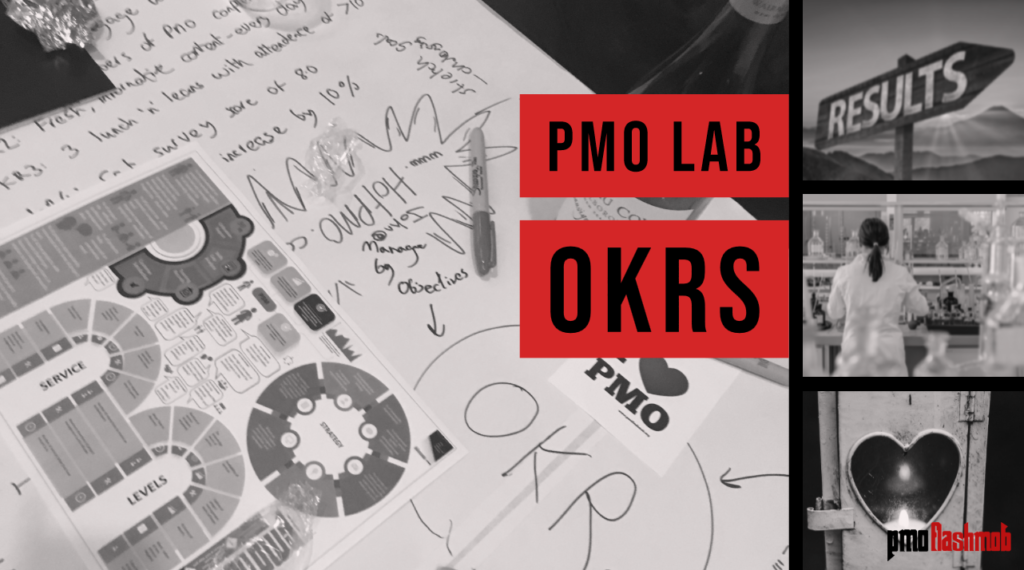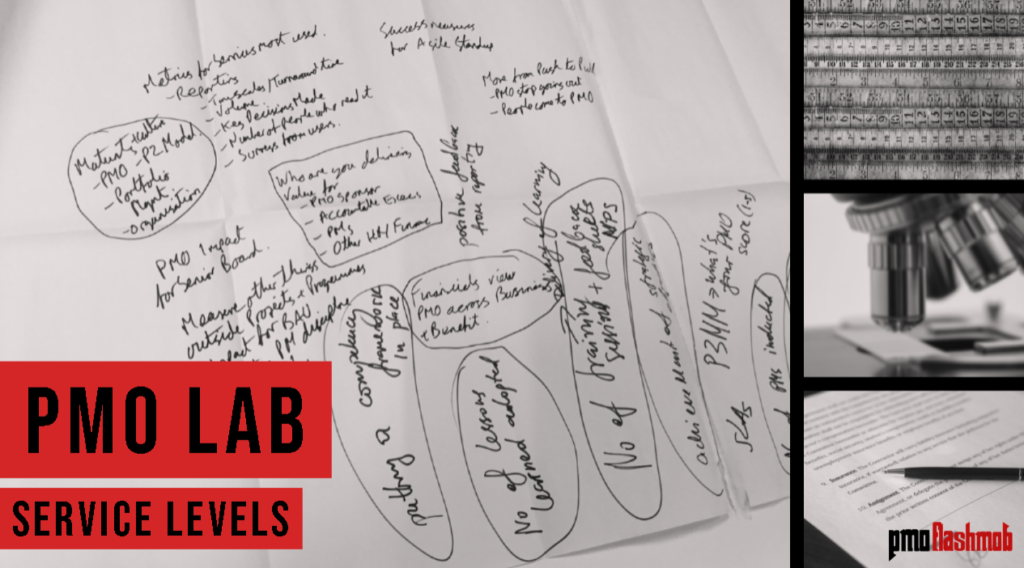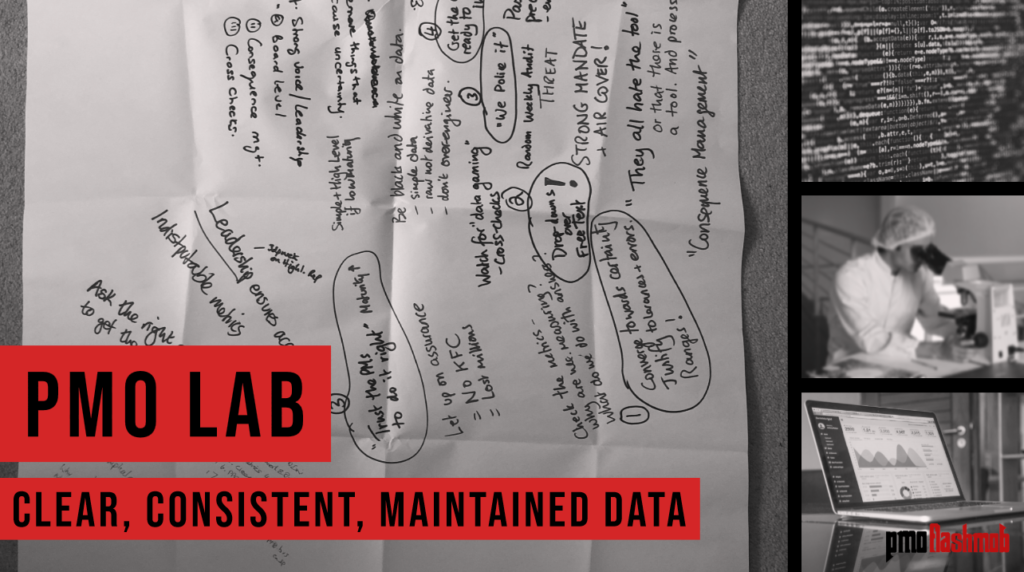You can find all our articles and past events
Free Articles | Inside PMO | PMO Conference | PMO Book Shelf
PMO Lab: Logical Frameworks
We had the first PMO Lab at the April PMO Flashmob held at Parliament UK. The PMO Lab is all about getting deeper into the themes that are explored in the Inside PMO Reports. It’s an opportunity for the community to learn from each other too. Over the next week days we’ll be sharing the lab results from the session in a series of posts.
The sessions were about exploring PMO KPIs, Metrics and Measures. It wasn’t about coming up with a load of different measures and metrics, it was more about exploring themes around that – perhaps there are different ways of thinking about this – or maybe people have some models or processes to share. We didn’t know what we would come up with.
At the session there were different lab benches with different areas of related subjects being looked at, prodded and poked to see what came out.
Donning the white coat, first up Logical Frameworks.
Logical Frameworks – What Are They?
I got chatting to an old friend of mine at Project Challenge and told him about the new report we had just released. He works in projects in the International Development area, top guy who was also responsible for bringing something called PMD Pro to the world (a way for people on the ground in international development to use great project management approaches in what is often the most difficult and challenging situations).
Anyhow, John told me about something they use when it comes to goal setting – a results mapping or outcomes mapping tool which is simplicity itself.
Here’s the simple template:
 Now we like simple things – simplier the better. This is a great tool to use when getting everyone involved to understand exactly what’s going to happen – what the goal is, what outcome we’re looking for; wehat outputs we can expect to see and what activities people will carry out.
Now we like simple things – simplier the better. This is a great tool to use when getting everyone involved to understand exactly what’s going to happen – what the goal is, what outcome we’re looking for; wehat outputs we can expect to see and what activities people will carry out.
I wanted to include it in the PMO Lab to see what others thought when we might consider using this on the PMO itself – setting goals for the PMO to achieve.
Using the Logical Framework
The website over at PMD Pro is really fab and you can have a read at it over there – love the graphics plus there are loads of additional resources for you to take a look at – simple, brilliant, love it.
Here’s the lowdown here, so we have the template:  And here’s the logic both ways to make sense of how you’re compiling it:
And here’s the logic both ways to make sense of how you’re compiling it: 
 And then the hard bit – how to really get to the goal you want to achieve and what the outcome/s of that might be.
And then the hard bit – how to really get to the goal you want to achieve and what the outcome/s of that might be.
We spent time on the night just talking about there being lots of different outcomes and how that drives different outputs and activities – plus of course different indicators against those.
Here’s a simple one from the international development world:  So from the lab session, we didn’t even have chance to get into a worked example for a PMO – we’ll leave that to you to try out.
So from the lab session, we didn’t even have chance to get into a worked example for a PMO – we’ll leave that to you to try out.
What we did get out of it was a simple tool (KISS!) that evokes lots of discussions.
We talked about the goals being probably something that is coming from the strategic level of the organisation in terms of the PMO – what does the business want.
The indicators would have to be such that the senior levels of the business also get it – it’s actually indicators that mean something to them – rather than the PMO being all naval-gazing about it again. So a common language is crucial here.
We talked about assumptions – or as some of us thought – what are the risks of not being able to hit the indicators and meet the goals.
That led onto bias – perhaps a separate column – what bias are at play with all of this – from the goal being set through to the assumptions being made. If we can identify them, can we mitigate them in some way?
Finally we all agreed – if you can get something into a one-pager, chances are people are going to (a) look at it (b) understand it (c) hopefully get behind it and make it happen.
So what do you think, logical framework? Something you could use for goal-setting in the PMO?  Other Sessions:
Other Sessions: 



